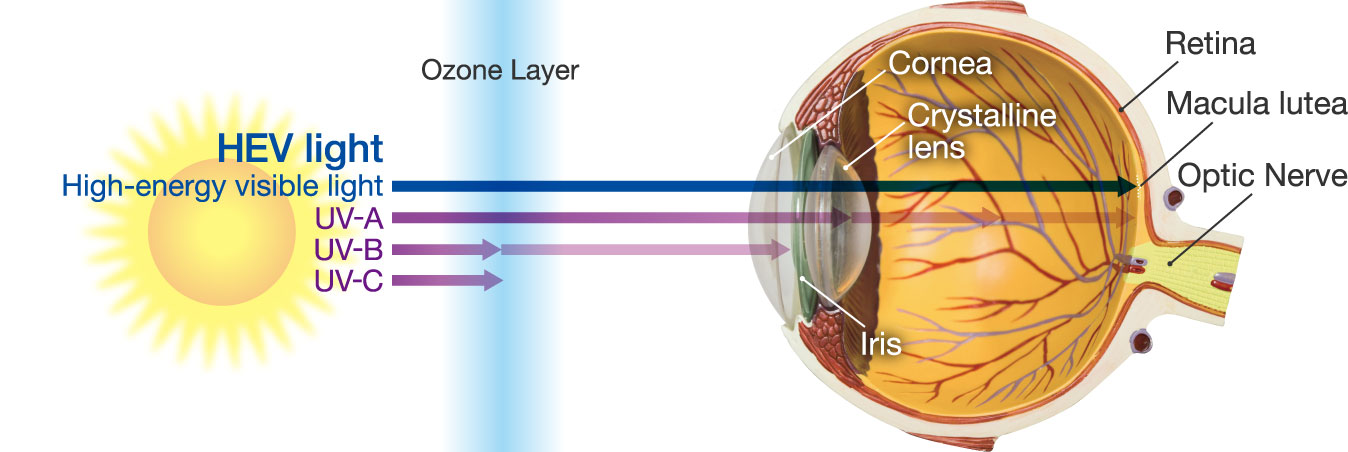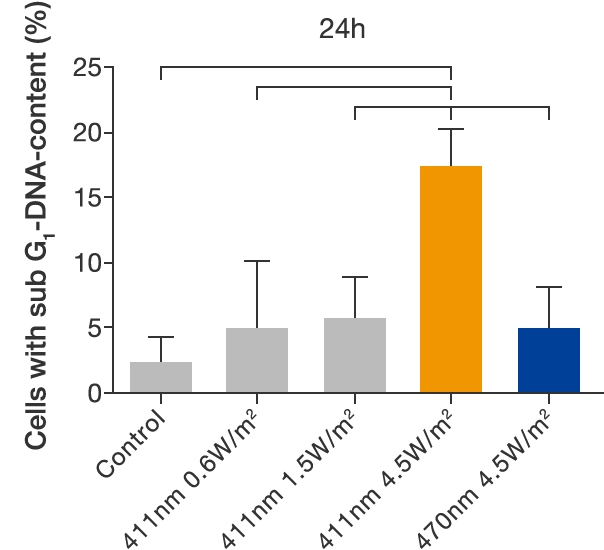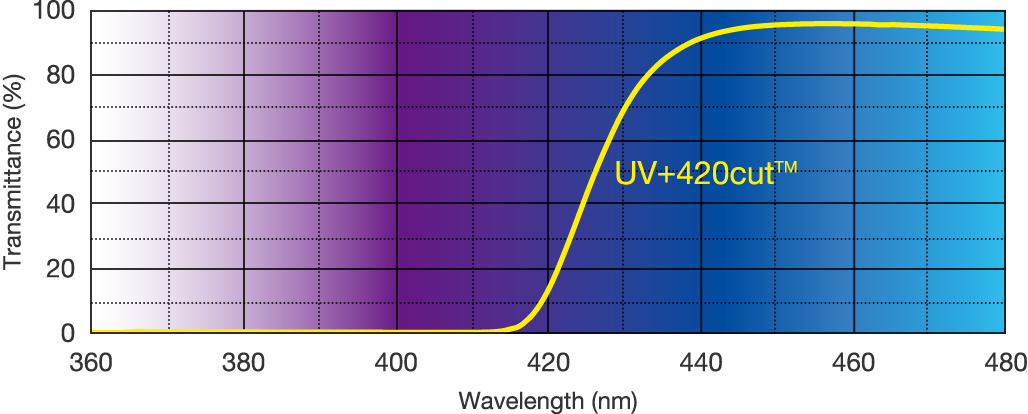Why choose UV+420cut™?
For the sake of long-term health of the eyes,
we focused on light up to 420 nm.
Two key points about UV+420cut™
Block harmful light in the 400–420 nm part of the spectrum in addition to UV.
Colors look natural even when 400–420 nm light is blocked.
Protect eyes from UV and high-energy visible (HEV) light.
Light is categorized by wavelengths, the shortest being ultraviolet, followed by visible and infrared. The shorter the wavelength, the higher the energy. Visible light refers to electromagnetic radiation with wavelengths from around 400 nm to 700 nm. As the wavelengths increase within that spectrum, the colors we see range from violet to red.
UV-C, characterized by wavelengths of up to 280 nm, is absorbed by the ozone layer in the atmosphere. UV-B, with wavelengths from 280 nm to 315 nm, is completely absorbed by the cornea at the surface of the eye. Of the longer wavelength UV-A light (315–400 nm), most is absorbed by the cornea. But of the light that passes through the cornea, almost all is absorbed by a part of the eye called the lens, with about 1% passing through the lens and reaching the retina. Exposure to these UV rays are known to cause photokeratitis (sunburn of the eye) and lead to chronic problems such as pterygium and cataracts. By cutting down on UV rays*1, we can reduce damage to the cornea and lens.
HEV light passes through the cornea and lens


In the visible spectrum, there is a type of light categorized as high-energy visible (HEV) light, whose energy is just below that of ultraviolet. HEV light is blue-violet to blue in color, with wavelengths of 400–500 nm. Often referred to as "blue light", these waves pass through the lens and reach the retina. Light in the 400–420 nm part of the spectrum is thought to be particularly harmful. In standardized lab experiments using cell cultures, Professor Richard Funk of the Technical University of Dresden has shown that neuronal retinal cells experience greater oxidative stress when exposed to 411 nm light than to 470 nm light, and show indications of cell death (apoptosis) (Fig. 1)*2. Because short-wavelength light in the 400–420 nm spectrum has such high energy, it is more likely to pass through the cornea and lens and induce harmful physical and chemical reactions . Younger individuals (up to around 20 years old) are at particular risk, because their eye lenses are especially transparent and they tend to participate in more outdoor activities.
Fig. 1

In animal testing, it was found there was a greater increase in the percentage of cells with sub-G1 DNA content (an indicator of apoptosis) after irradiation for 24 hours with 411 nm light (at 4.5 W/m²) than with other wavelengths. (Control: before irradiation)

Richard H. W. Funk
Carl Gustav Carus,
Faculty of Medicine,
Technical University of Dresden
Colors look natural
This is why we created lenses for everyday use that cut out light from ultraviolet up to 420 nm, using UV+420cut™ technology.
The 400–420 light filtered out by UV+420cut™ technology has no effect on how colors appear.
Filters out HEV light in the 400–420 nm spectrum, as well as UV light.

*measured with hard multi coated lens, 2 mm thick at center
Reference
*1 WHO Protection Against Exposure to Ultraviolet Radiation 1995
*2 Knels, L., Valtink, M., Roehiecke, C., Lupp, A., Vega, J. d. l., Mehner, M., & Funk, R. H. W. (2011) Blue light stress in retinal neuronal (R28) cells is dependent on wavelength range and irradiance. European Journal of Neuroscience, 34, 548-558

